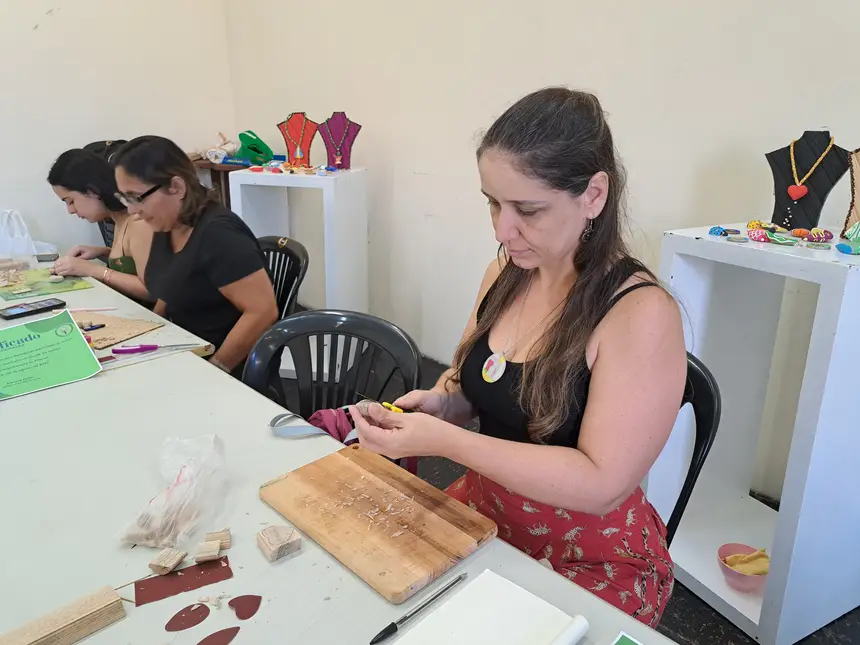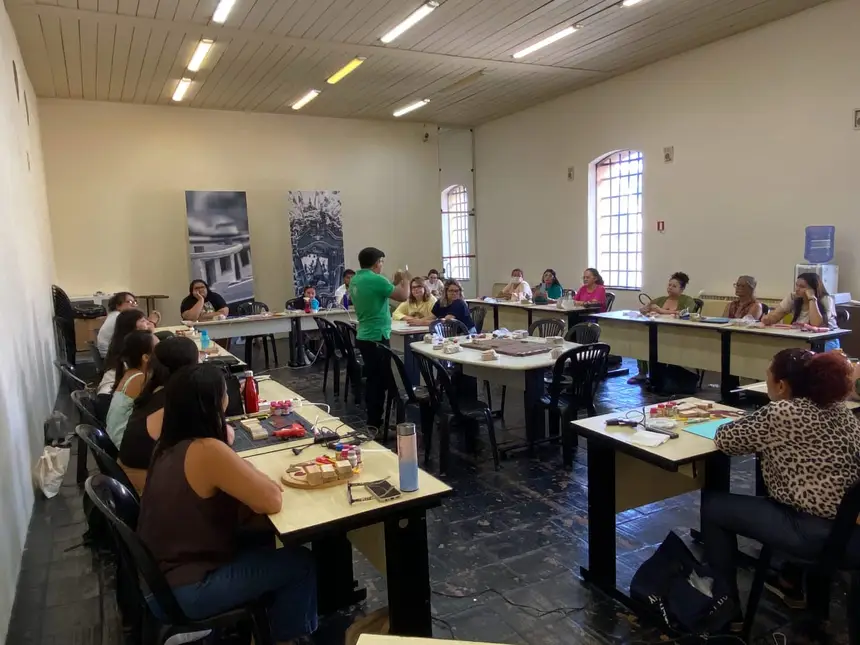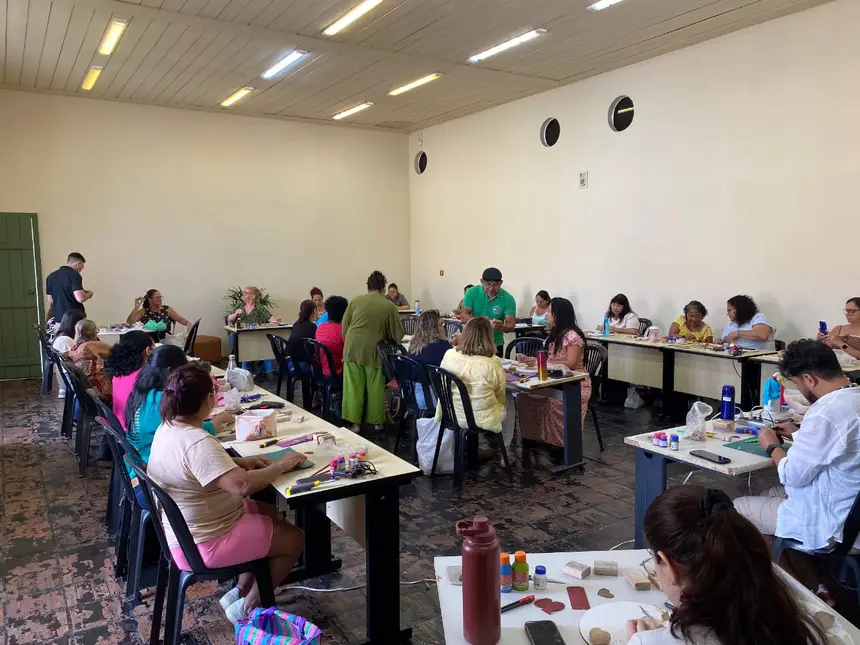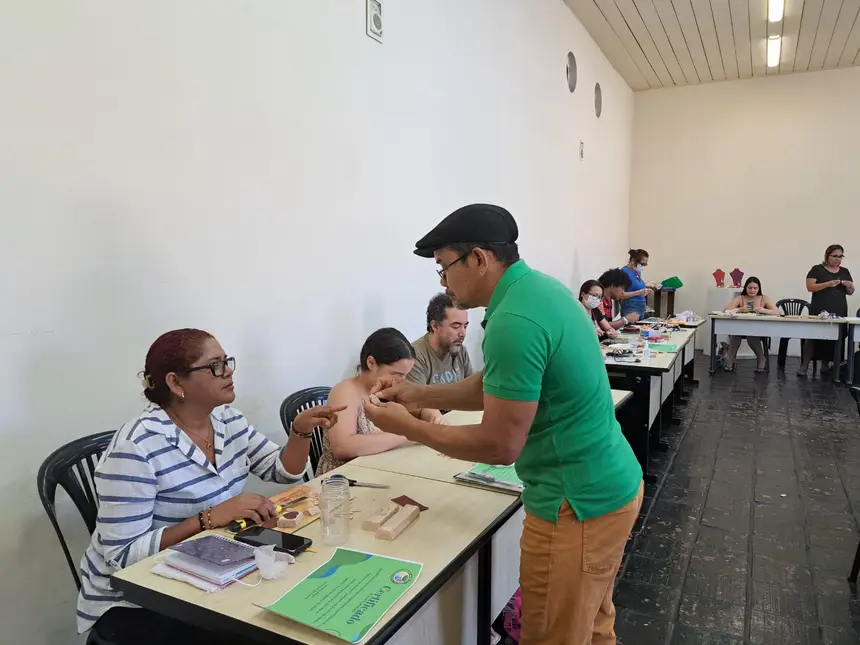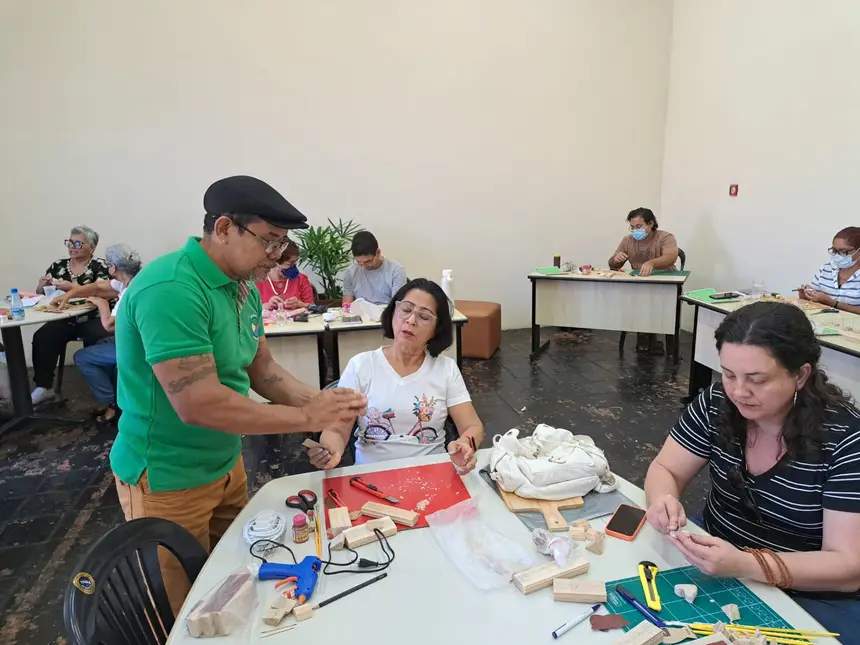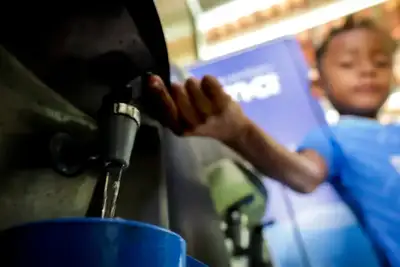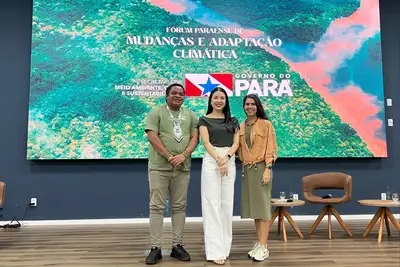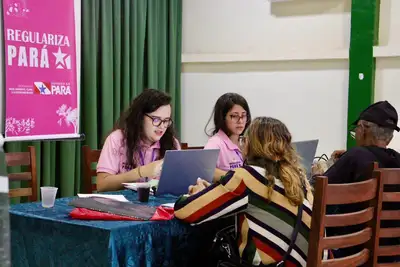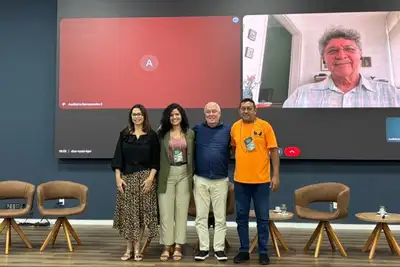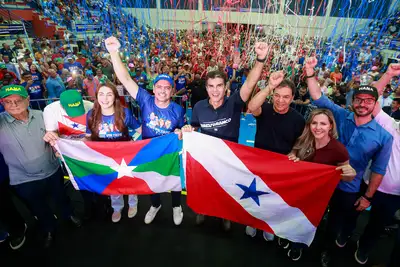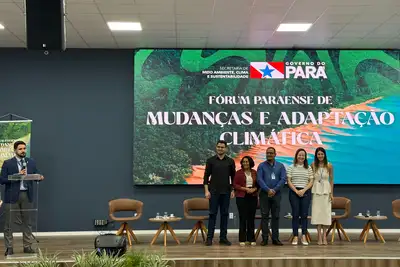São José Liberto Space hosts the second edition of the miniatures course in miriti
The workshop aimed to integrate traditional knowledge with environmental practices and the creative economy
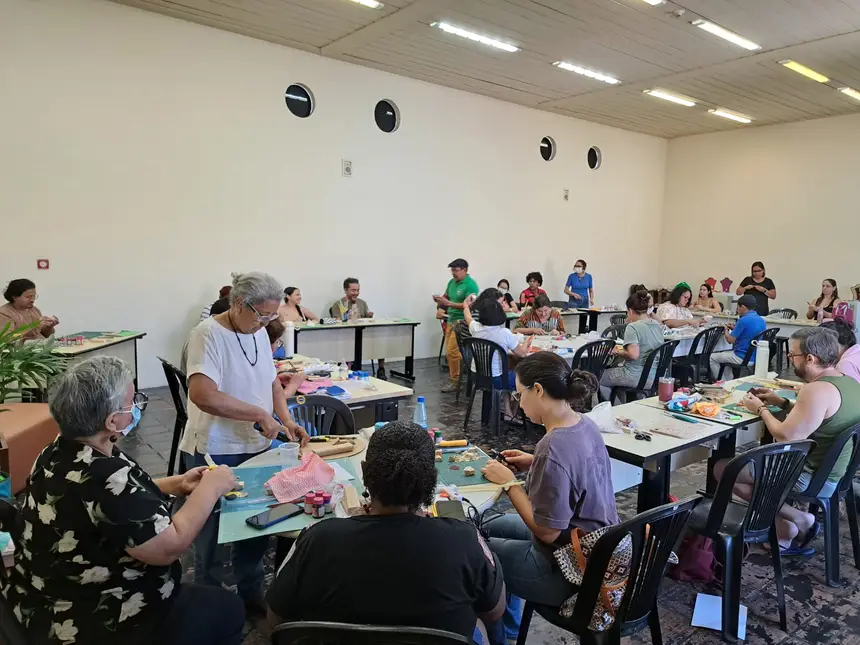
The strength of artisanal tradition allied with sustainability in the second edition of the course focused on the production of handmade miniatures in miriti, held last Saturday (2) at the São José Liberto Space (ESJL). During the activity, participants produced miniatures (sustainable souvenirs) using miriti — a fiber extracted from a native Amazonian palm tree known as miritizeiro or buriti (Mauritia flexuosa).
The activity brought together about 37 participants, including local artisans and entrepreneurs. With a focus on valuing regional raw materials and strengthening the local production chain, the workshop sought to integrate traditional knowledge with environmental practices and the creative economy.

The pieces produced are inspired by Amazonian culture and traditions, highlighting representations of religiosity — such as miniatures of Our Lady of Nazareth — as well as boats, canoes, and elements of the region's fauna and flora.
Under the guidance of artisan Josias Plácido Alcântara Silva, Master Pirias — a native of Abaetetuba, a city recognized as the world capital of miriti toys — participants learned techniques for handling the fiber, including laser cutting, painting, sanding, assembling, and customizing the pieces.
The initiative was promoted by the Sustainable Amazon Collective Pará and Miriti Amazônia, with support from the State Secretariat for Economic Development, Mining, and Energy (Sedeme). More than just stimulating new possibilities for Pará's handicrafts, the workshop reinforces the role of São José Liberto as a space dedicated to local culture and entrepreneurship.
Partnership - Master Pirias emphasizes the importance of the partnership with Sedeme in conducting the miniatures workshop in miriti, to strengthen and value traditional Pará handicrafts.
“The great demand for the first edition, held in July, led us to open a second
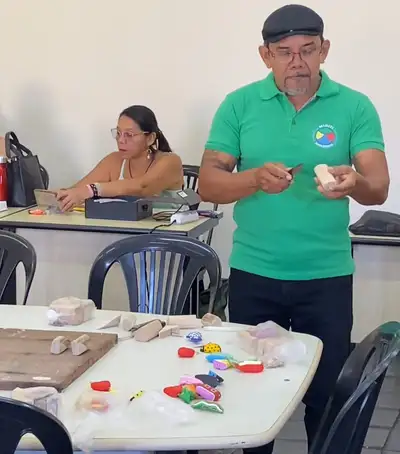
class. The handicraft in miriti is a true cultural heritage of our state. Sharing the knowledge I have accumulated over the years with the participants of this course is an honor — and also a way to keep this very special art alive. At COP 30, we will certainly present the strength of Pará's handicrafts. I feel that with initiatives like this, we are ensuring that miriti continues its path of renewal: modernizing, gaining new uses and forms, and, above all, perpetuating our culture for future generations,” emphasized Pirias.
Artisan Ana Lúcia Varela, 52, has been working in handicrafts for over three decades, focusing on creating affective plaques with motivational phrases. The pieces are made from reused wood, collected from construction sites — a way to give new meaning to discarded materials.
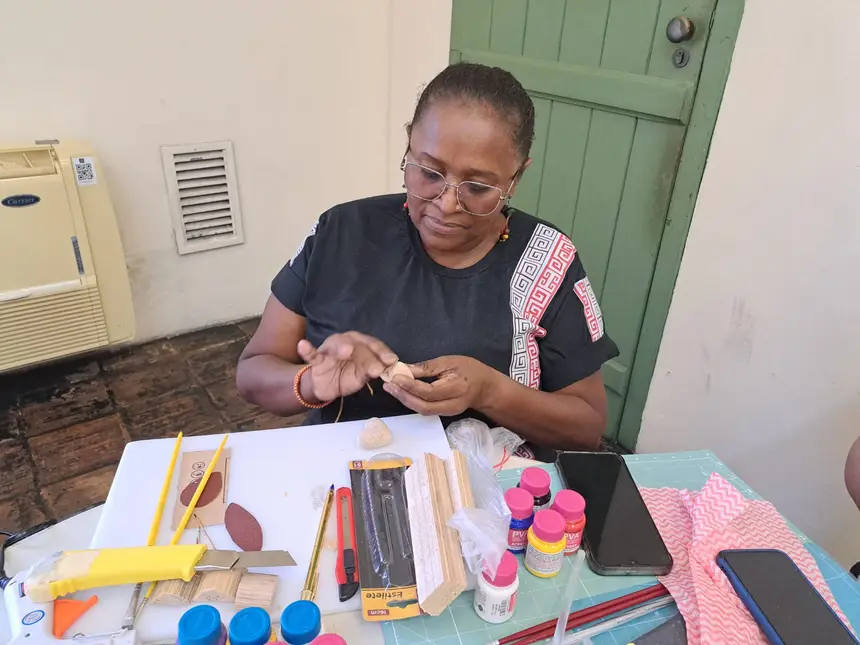
“I started working with miriti because it is an extremely versatile fiber. It offers lightness and ease of handling, which makes the creative process even more enjoyable. With the techniques I am learning in this course, I intend to improve my production and add even more value to the pieces — especially since it is a sustainable material,” highlighted Ana.
Bio-jewelry - Architect and artisan Pérola Martins also participated in the workshop. She says that as soon as she learned about the course at São José Liberto Space, she made sure to secure her registration. Pérola works on the Foli Ateliê Vivo project, producing bio-jewelry and handmade decorative objects using plants, flowers, and natural seeds preserved in resin.
“I intend to add value to my products by incorporating miriti into my creations. It is a way to innovate while also valuing a typical raw material from our region,” emphasized the artisan.


